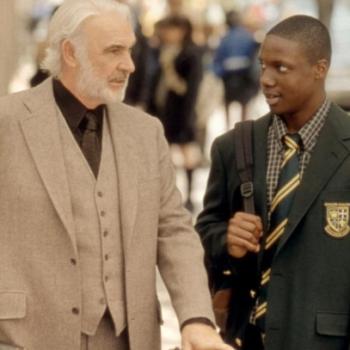
We learn very early on in Jon M. Chu’s In the Heights that everyone has a dream. Everyone has a song. Even the neighborhood Abuela spends her days wondering whether the sacrifices she and her mother made had lasting impact. Even the dude who sells snow cones has a story to tell. This is probably true of every place and every community, but it takes a special kind of ear to key in on this and bring it all to life for everyone to see.
This 2021 film adaptation of the Broadway stage musical sees Usnavi recounting the story of his hometown in Washington Heights in New York City. He recounts a crossroads he faced concerning whether to return to his father’s country of the Dominican Republic. He remembers the choices he made and the people he knew that guided him to where he is now.
I’m going to do my best to just make this a straight thematic reading of the film and not a historical survey of all movie musicals or an intricate study of the semantics of musical storytelling, but … a key part of this movie’s punch is the way it derives musical fantasticality from very mundane circumstances. This is not Moulin Rouge! can-caning to the electricity of 1900 Paris. This is an overlooked district of good old New York City, and yet it is a firework from start to finish. There are a couple of ways that the film pulls this off.
One is Jon M. Chu being a masterful director and finding creative ways to integrate musicality into a very grounded setting. Sometimes this means staging a community hoedown in the swimming pool. Sometimes it’s letting Melissa Barerra barrel down the empty streets with clouds of fabric raining down around her. Sometimes it’s letting Benny and Nina literally dance up the side of the apartment building at sunrise.
Another part of this is the vibrancy of this cast of characters and the bonds they share. These characters and these situations are not without tension or conflict, but so much of the story has the denizens of Washington Heights coming together to build one another up. You spend a moment wishing that your neighborhood was so rich. And there are also moments where, even through the veil of song and dance, you can recognize fleeting glimpses of your town, or wherever it was that you felt at home.

A third part of this is content of the story itself. This is a story about dreamers, and again, something that the movie drives home is that everyone has a dream. This is a communal story for sure, but it’s also safe to designate Usnavi as the film’s protagonist. Usnavi occupies a unique space here in that he’s not exactly wide-eyed or optimistic. He has dreams like everyone, yes, but a part of him resists getting his hopes up. This sets him apart from the other dreams of Washington Heights and other heroes of the musical genre.
And yet … even Usnavi’s ability to literally make music out of milk spoiling in the fridge reveals that he’s in on the secret too. He hears the music of the streets just like everyone else. He has a dream, he just wants them to take him far away from here, and he’s desperate to dismiss any voice telling him that all he could ever hope for is right where he is.
Usnavi’s arc kind of brings to mind a flipped-mirror of Pat from Silver Linings Playbook. Usnavi is not an optimist like Pat is, but like Pat, he has made his happiness entirely dependent on some detached mirage. For Pat, that was his ex-wife. For Usnavi, it’s his old country. Both of their quests to find happiness bring them more in alignment with truth and with the awareness that they don’t have to fundamentally change themselves or their environments to find peace. The music is always there if you’re willing to listen for it.
Anyways, this Jon M. Chu guy seems to know what he’s doing. Someone should ask him if he’d be interested in making more musicals.














